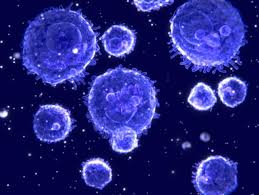The 2016 classification of lymphoma has introduced a new category of High-Grade B Cell Lymphoma (HGBL) with suggested work up algorithm as shown in Fig1 below.

Fig1: Schema to work up the newly separated category of HGBL
A new philosophy of first lumping all high-grade B cell lymphomas and then sub typing has been adopted. Lymphoblastic lymphomas (LL), Blastoid Mantle cell lymphoma (BMCL), Burkitt lymphoma (BL) and DLBCL are potential subtypes contributing to HGBL.
HGBL is classified into
- HGBL NOS
- HGBL with MYC AND BCL2 &/or BCL6 rearrangement
HGBL (NOS) is a category with Blastoid morphology that is not LL, BMCL, BL or HGBL with MYC AND BCL2 &/or BCL6 rearrangement. This sounds simple as all the subtypes to be excluded have concrete immunohistochemical or molecular signatures.
Diagnosing HGBL with MYC AND BCL2 &/or BCL6 rearrangement also sounds simple. All high-grade B cell lymphomas which have dual or triple hits of MYC, BCL2 & /or BCL6 and are not Burkitt Lymphoma shall fall into this category.
Is it truly this simple? Several questions come to the mind
- What is Blastoid morphology? Is it the group with cells equal in size to high endothelial venules with salt and pepper chromatin and high rate of mitosis? Or is it a colloquial term meaning intensely proliferative B cells.
- Shall all morphologically and IHC identifiable BL is tested beyond MYC rearrangement because these can still be HGBL with double and triple hits.
- Why shall all HGBL with overlapping morphology between DLBCL & BL and negative for molecular signatures of BL and HGBL with double or triple hits be classified as HGBL (NOS) and not DLBCL?
- Shall all HGBL NOS be tested for 11q alterations to conclusively exclude the BL?
- And the most important of all questions is who amongst the vast number of DLBCL be subjected to molecular testing for identifying HGBL with MYC AND BCL2 &/or BCL6 rearrangement
- What happens to double expressers? Those will still be part of DLBCL.
Despite several concerns, the positives are
- i) Recognition of HGBL with MYC AND BCL2 &/or BCL6 rearrangement, a category in need of a treatment regimen other than RCHOP
- ii) Better classification of BL versus double hit lymphoma
- iii) And finally, shall provide an impetus to laboratories to develop molecular capabilities.
Disclaimer: The pictures used in this blog is for education purpose only, with no commercial usage.
Last modified: 17/07/2017







